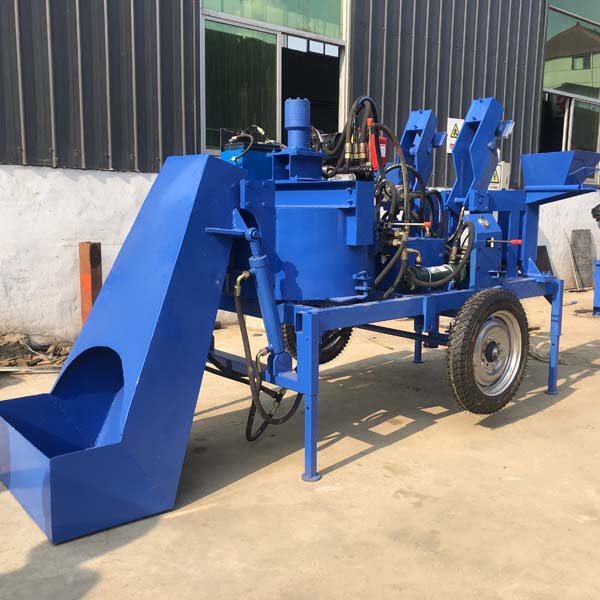
Image source Aiweibrickmachine
Digital Marketing and Sales Strategies for Semi-Automatic Block Machine Manufacturers
In today’s digital age, effective marketing and sales strategies are essential for the success and growth of any manufacturing business, including semi-automatic block machine manufacturers. To thrive in a competitive market, manufacturers must leverage digital tools and techniques to reach a global audience, build brand awareness, and generate leads. This comprehensive guide explores digital marketing and sales strategies tailored to the specific needs of semi-automatic block machine manufacturers.
Section 1: Understanding the Digital Landscape
1.1 The Importance of Digital Presence
In a connected world, a strong digital presence is critical. It serves as a virtual storefront, enabling potential customers to learn about your products and services, assess your credibility, and make informed purchasing decisions.
1.2 Target Audience Analysis
Identifying and understanding your target audience is the foundation of any successful digital marketing strategy. Knowing your audience’s needs, pain points, and preferences will guide your marketing efforts.
Section 2: Building a Robust Website
2.1 Responsive Web Design
Ensure your website is responsive and mobile-friendly to provide a seamless user experience across all devices.
2.2 Content Optimization
Create high-quality, informative content that showcases your products, highlights their benefits, and addresses common industry challenges.
2.3 SEO (Search Engine Optimization)
Implement on-page and off-page SEO strategies to improve your website’s visibility in search engine results, driving organic traffic.
2.4 User-Friendly Navigation
Simplify website navigation to help visitors find relevant information quickly and easily.
Section 3: Leveraging Social Media
3.1 Platform Selection
Identify the social media platforms that resonate most with your target audience. LinkedIn, Twitter, and YouTube can be particularly effective for B2B marketing.
3.2 Engaging Content
Share engaging content, including product videos, tutorials, industry news, and customer testimonials, to build brand engagement and credibility.
3.3 Paid Advertising
Consider paid advertising campaigns on platforms like LinkedIn and Facebook to reach a broader audience and generate leads.
Section 4: Email Marketing
4.1 Building a Subscriber List
Collect email addresses through your website and other digital channels to create a subscriber list for email marketing campaigns.
4.2 Drip Campaigns
Develop automated drip campaigns that nurture leads through the sales funnel, providing valuable information and promoting your products.
4.3 Personalization
Segment your email list based on user behavior and preferences, allowing for personalized email content and product recommendations.
Section 5: Content Marketing
5.1 Blogging
Maintain a blog on your website to regularly publish informative articles, industry insights, and case studies.
5.2 Video Marketing
Produce product demonstration videos, tutorials, and customer success stories to engage and educate your audience.
5.3 Whitepapers and Ebooks
Offer in-depth resources like whitepapers and ebooks in exchange for contact information, allowing you to generate leads.
Section 6: Sales Enablement
6.1 CRM (Customer Relationship Management) Software
Implement a CRM system to track leads, manage customer relationships, and streamline the sales process.
6.2 Lead Scoring
Develop a lead scoring system to prioritize leads based on their level of interest and readiness to purchase.
6.3 Sales Collateral
Equip your sales team with the necessary materials, including product brochures, case studies, and competitive analysis, to facilitate effective selling.
Section 7: Analytics and Optimization
7.1 Data Analysis
Regularly analyze website traffic, email campaign performance, and lead conversion rates to identify areas for improvement.
7.2 A/B Testing
Conduct A/B tests on website elements, email subject lines, and call-to-action buttons to optimize for better results.
7.3 Continuous Improvement
Based on data-driven insights, continually refine your digital marketing and sales strategies to adapt to changing market dynamics.
Section 8: International Expansion
8.1 Localization
If you aim to expand globally, consider localization efforts such as translating your website content and adapting marketing campaigns to specific regions.
8.2 International Partnerships
Explore partnerships with international distributors and resellers to broaden your market reach.
Section 9: Compliance and Data Security
9.1 GDPR and Privacy
Ensure that your digital marketing and sales practices comply with data protection regulations such as GDPR (General Data Protection Regulation).
9.2 Cybersecurity
Implement robust cybersecurity measures to protect customer data and maintain trust.
Section 10: Conclusion
In an increasingly digital world, semi-automatic block machine manufacturers must embrace digital marketing and sales strategies to remain competitive and drive growth. By building a strong online presence, engaging with the target audience on social media, delivering valuable content, and optimizing the sales process, manufacturers can generate leads, convert prospects into customers, and expand their global reach. The digital landscape offers limitless opportunities for manufacturers to thrive and innovate in the ever-evolving construction industry.
